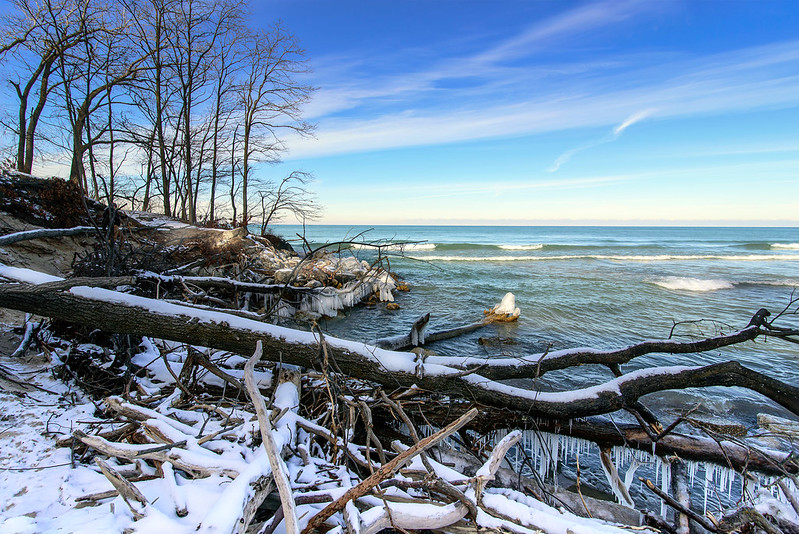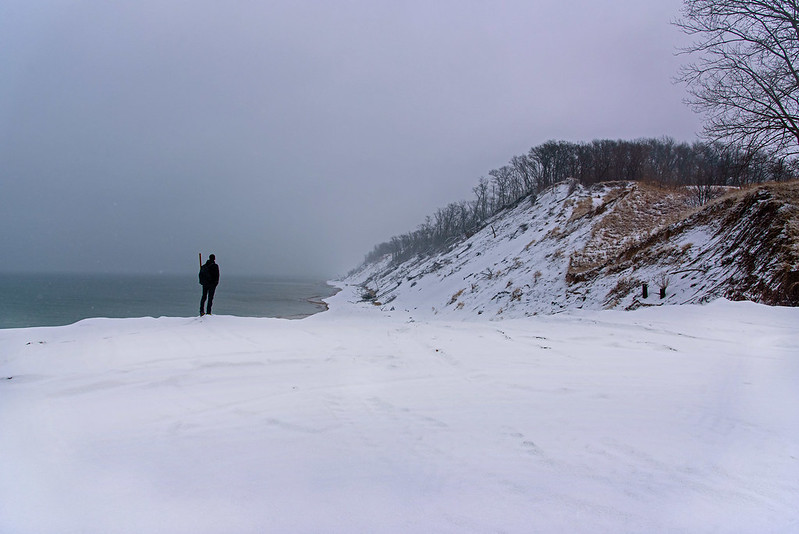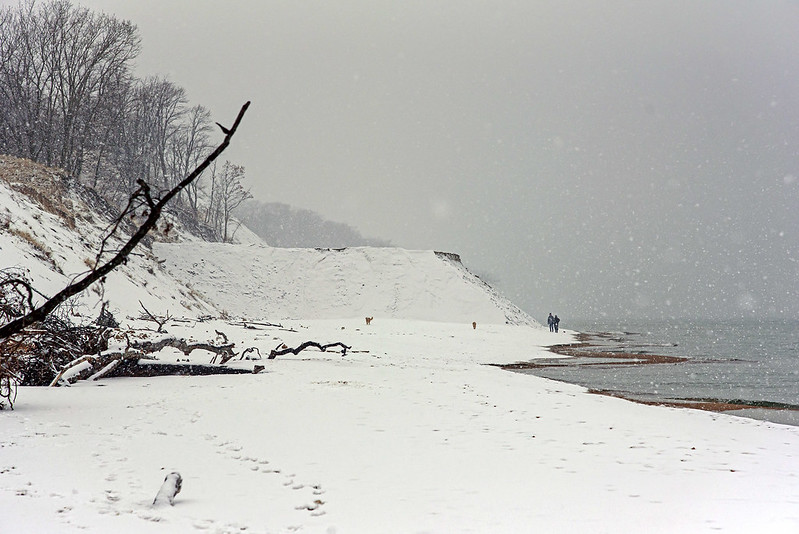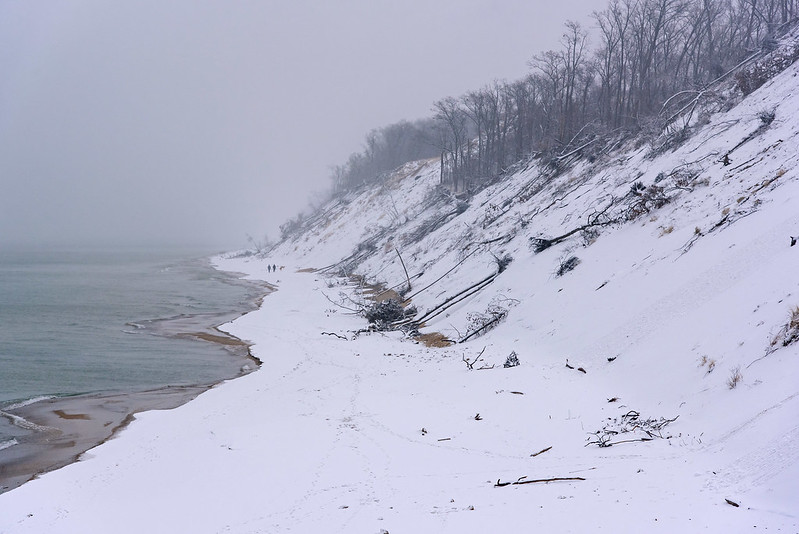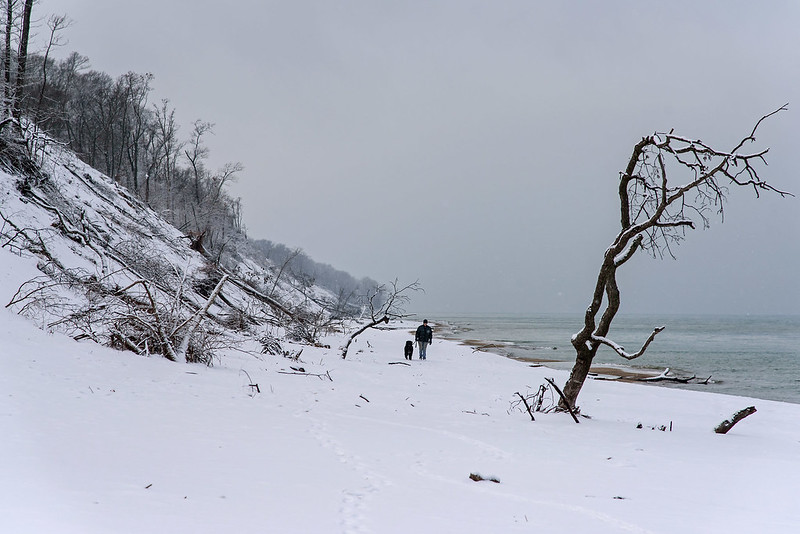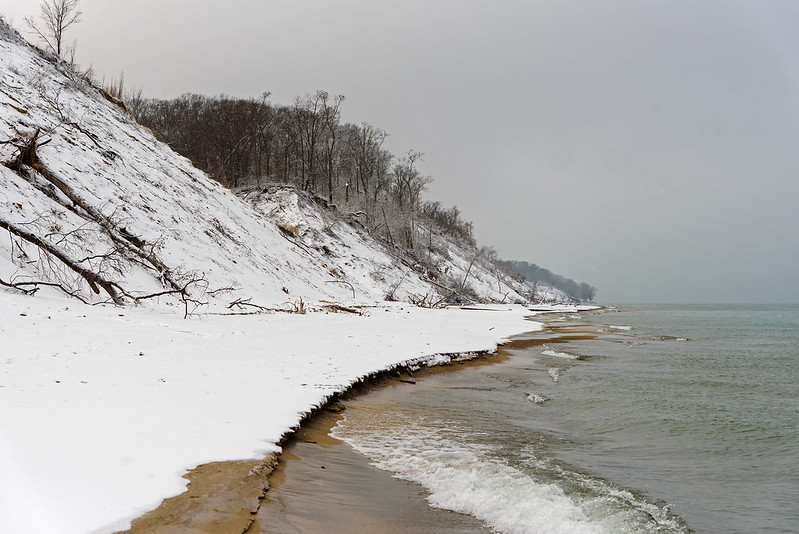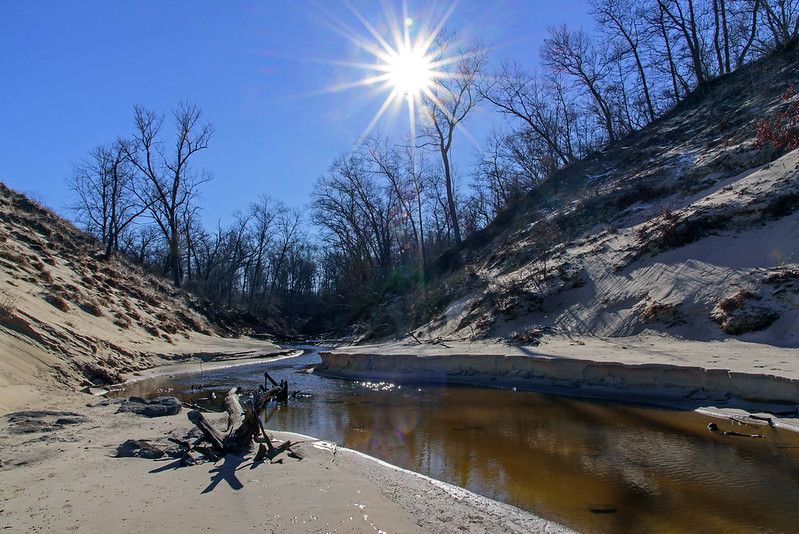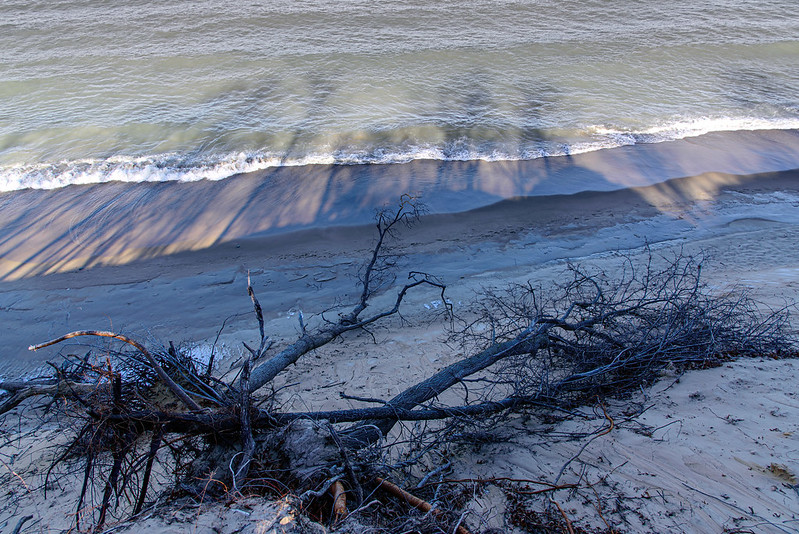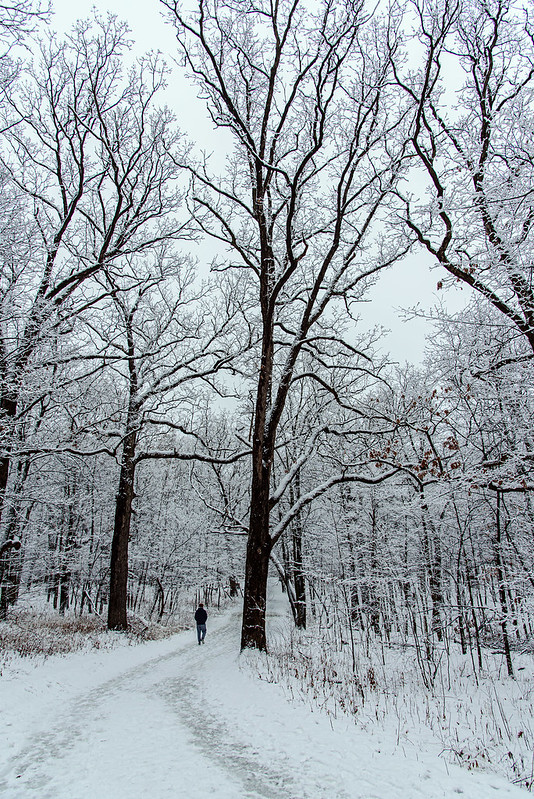Here as the ice begins to form, you can see shelf ice (the ice that attaches to the shoreline that can build tall mounds over time), floe ice (the ice pieces floating in the water), and pancake ice (round formations of floating ice that are created by the constant bumping around of the chunks of ice). This is a great time to see just how these formations are created, and it's still safe to go near the shore. While it's never safe to venture out onto the shelf ice, here, the shelf ice is still mainly only hills of ice on the sand that touch the water. However, the ice that is in the water - even if it seems to be sitting on the bottom of the lake - can be very dangerous to walk on. Stay off!
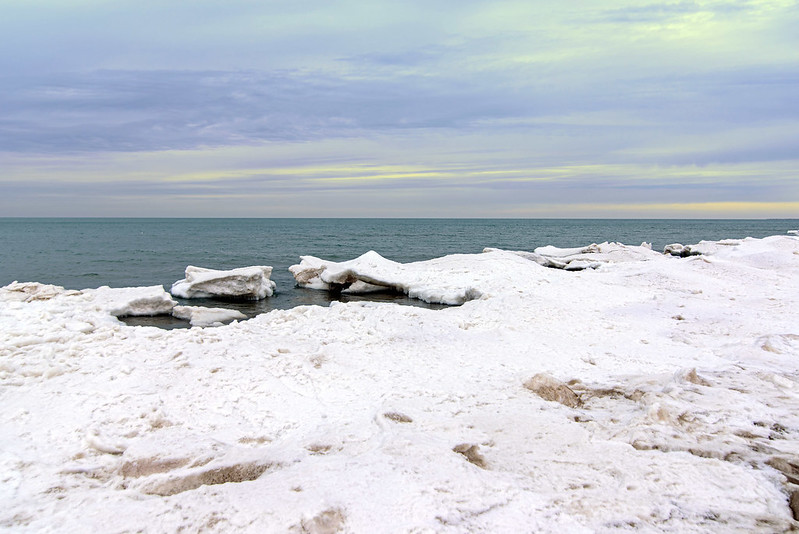
Even though the ice is just forming, there are still large chunks of ice out in the lake, and many of them are beautiful on their own. It will be interesting to watch these formations grow and change over the next few weeks. If the temperatures remain below freezing, and the winds keep pushing the waves and ice toward the shore, the shelf ice can grow relatively fast. High waves will pile the ice up to 10 or 15 feet in hight, creating ice volcanoes, cone-shaped mounds where the center is hollow and water is able to push ice to the surface where it piles up - similar physics as a volcano mound. After a few weeks, these ice fields can extend hundreds of feet into Lake Michigan. Coupled with floe ice and more storms, they can reach as far as the eye can see, making a beautiful arctic scene right here in the Midwest.



